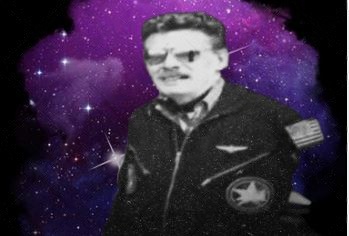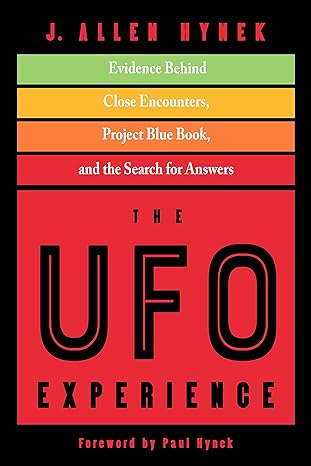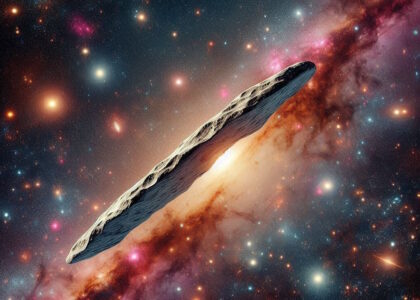With your curiosity about UFO mysteries, understanding Paul Frederic Bennewitz Jr.’s role offers valuable insight into the evolution of extraterrestrial legends. As a physicist and businessman turned investigator, Bennewitz’s claims and experiences sparked interest and controversy, fueling stories about secret alien bases, abductions, and government cover-ups. His interactions with government agencies and involvement in disinformation campaigns significantly shaped modern UFO folklore, making his story important for anyone exploring the complex intersection of fact, fiction, and conspiracy in the UFO community.
The Early Life and Career of Paul Bennewitz
Academic Background and Professional Start
Paul Bennewitz earned a PhD in physics, laying a solid foundation for his future investigations. During World War II, he served as a radio electronics engineer with the Coast Guard and later applied his expertise at CBS stations KPIX in San Francisco and KPHO in Tucson. This combination of advanced education and practical engineering experience set him on a path that blended technical skill with investigative curiosity.
Transition to New Mexico and Business Ventures
By the early 1950s, Bennewitz relocated to New Mexico, initially working in sales for Gulton Industries. He soon leveraged his technical background to launch an industrial sales company of his own. The pivotal moment came in 1966 when he acquired rights to a humidity sensor from Sandia National Laboratories and founded Thunder Scientific, a family-run business that steadily grew throughout the 1970s.
Thunder Scientific demonstrated Bennewitz’s ability to bridge innovation with entrepreneurship. At its peak in 1978, the company employed 30 people and generated approximately $1 million in sales. However, by 1981, economic fluctuations led to a reduction in workforce to 18 employees and a decline in profits. Despite these challenges, the business remained a significant regional player, highlighting Bennewitz’s commitment to technological development and his role as a local industrial figure.
The Awakening: Bennewitz’s Entry Into UFO Investigations
Influences from the Aerial Phenomena Research Organization
Your understanding of Bennewitz’s early involvement in UFO investigations deepens when you consider his connection to the Aerial Phenomena Research Organization (APRO). As a member during the 1970s, Bennewitz gained exposure to civilian-led UFO research and networking opportunities. APRO’s role in legitimizing UFO sightings provided him with a platform to pursue his own inquiries, while also introducing him to prominent figures in the community. This affiliation helped channel his scientific background toward investigating unexplained aerial phenomena rather than dismissing them outright.
The Cattle Mutilation Phenomenon and Its Connection to UFOs
Before long, Bennewitz’s focus expanded as he started linking cattle mutilations to extraterrestrial activity. By the mid-1970s, these mutilations had become a hot topic within UFO circles, often characterized by precise surgical-like incisions and the mysterious disappearance of organs. You can trace the escalation of his interest to the April 1979 public meeting on this issue, where he interacted with government officials and investigators like New Mexico highway patrol officer Gabe Valdez—the region’s primary cattle mutilation expert. This meeting marked a turning point, signaling Bennewitz’s move from general interest to active investigation.
The phenomenon itself baffled many due to its unexplained nature and the suspicious manner of the injuries inflicted on livestock. Cases often involved animals found drained of blood, with no signs of struggle or predator involvement, intensifying speculation among UFO researchers. By tapping into local reports and scientific anomalies, Bennewitz began using electronic equipment to capture supposed signals and images near sites linked to these mutilations. His pursuit of evidence around Kirtland Air Force Base and other restricted areas illustrates his commitment to uncovering a tangible extraterrestrial connection behind the mutilations, which would soon feed into the broader Dulce Base narratives and dubious government interactions.
The Encounter That Sparked a Controversy: Myrna Hansen
The Meeting and Its Implications
In early May 1980, a woman identifying herself as Myrna Hansen arrived at Paul Bennewitz’s Albuquerque home with her young son. She recounted witnessing two massive, silent objects—comparable in size to Goodyear Blimps—hovering silently over a New Mexico meadow. The unusual nature of her report quickly connected her to ongoing cattle mutilation investigations, prompting highway patrol officer Gabe Valdez to link Hansen with Bennewitz. This meeting intensified Bennewitz’s focus on possible extraterrestrial activity, planting seeds for deeper exploration shaped by both genuine curiosity and, as later speculated, governmental manipulation.
Hypnosis Sessions and the Birth of Dulce Base Lore
You observe that under hypnosis, Hansen’s testimonies evolved dramatically, featuring vivid recollections of alien abductions and an underground complex filled with floating vats of body parts. These sessions, orchestrated in Bennewitz’s foil-shielded Lincoln Town Car, became the foundation for the Dulce Base narrative, a secret alien facility embedded deep beneath New Mexico’s terrain. The sessions introduced concepts like alien implants and interactions that would embed themselves firmly in UFO conspiracy lore, influencing decades of speculation and frightening imagination alike.
These hypnotic regressions, conducted initially by psychologist Leo Sprinkle and later by engineering professor James Harder, leveraged unusual protective measures against supposed alien interference—such as aluminum foil shielding—reflecting the heightened paranoia surrounding the case. Hansen’s accounts notably included her querying “Where’s Roswell, New Mexico?”, linking two landmark UFO events before the broader public had connected them. This intersection fueled a complex mythos intertwining government suspicion, extraterrestrial fears, and the shadowy coalescence of conspiracy narratives. The elaboration of Dulce Base lore through Hansen’s sessions became a touchstone for conspiracy theorists and shaped Paul Bennewitz’s unraveling, casting a long shadow over subsequent UFO discourse.
You might be tempted to think that the idea of a tin foil hat came from him, but the concept of a tin foil hat to shield against mind control or electromagnetic radiation dates back to a 1927 short story titled “The Tissue-Culture King” by Julian Huxley. In the story, a character uses metal foil hats to protect against telepathy and mind control by a villainous scientist. The term “tin foil hat” has since become a symbol of paranoia and association with conspiracy theories.
Trivia: Tin foil hats were used humorously in M. Night Shyamalan’s alien invasion movie, Signs.
The Government’s Shadow: Disinformation and Manipulation
The Role of Kirtland Air Force Base
Kirtland Air Force Base emerged as a focal point in Bennewitz’s investigations, where he claimed to intercept electronic signals linked to extraterrestrial activity. His reports to the base in late 1980 marked the beginning of a complex interaction, as government personnel appeared to both engage and mislead him. Kirtland’s proximity to sensitive military installations made it a logical, if secretive, nexus for Bennewitz’s UFO theories and ultimately a hub for alleged disinformation operations targeting him.
The “Dulce War” Narrative and Its Consequences
The “Dulce War” story, which Bennewitz outlined in correspondence and public statements, described a violent conflict around 1979 or 1980 involving an alien-human underground facility near Dulce, New Mexico. This narrative, embraced and expanded by prominent conspiracy theorists, intensified UFO folklore and fueled sensational claims with lasting cultural impact.
Bennewitz’s depiction of the “Dulce War” included an alleged armed dispute over weapons that led to the military’s withdrawal from the base under mysterious and violent circumstances. Such assertions were incorporated into broader conspiracy theories by figures like John Lear and Phil Schneider, catalyzing a widespread belief in a clandestine war between human forces and extraterrestrials. This story deepened claims about secret bases and shadow wars, influencing tabloid headlines and UFO literature through the 1980s and beyond, while also entangling Bennewitz even further in government disinformation schemes.
From Belief to Paranoia: Bennewitz’s Mental State
Indicators of Declining Mental Health
By mid-1988, Bennewitz exhibited clear signs of psychological distress, including extreme paranoia and delusional thinking. He believed electromagnetic devices were controlling him and those around him, leading to heightened anxiety. His growing distrust extended to his own family, culminating in accusations against his wife. Armed with firearms and convinced he faced imminent threats, his behavior deteriorated noticeably, signaling a shift from passionate investigation to mental instability.
The Collapse After Accusations of Alien Control
In August 1988, Bennewitz’s mental state sharply declined after he accused his wife of being manipulated by extraterrestrials. He barricaded himself inside his home using sandbags, displaying intense fear and defensive behavior. Concerned for his safety, his family intervened, leading to his admission at Presbyterian Anna Kaseman Hospital’s mental health unit for a month-long observation.
Bennewitz’s breakdown was marked by his conviction that alien forces had infiltrated his closest relationships, a belief that intensified his isolation and paranoia. This period coincided with documented government disinformation efforts, where false information was allegedly fed to him to exacerbate his psychological decline. These manipulations, combined with his deepening delusions, culminated in hospitalization, effectively ending his public UFO investigations.
The Impact of Bennewitz’s Claims on UFO Culture
The Ripple Effect in Popular Media and Research
You can trace numerous media portrayals and UFO research back to Bennewitz’s sprawling narratives. His 1983 UPI story about UFOs near Manzano Weapons Storage sent ripples through the community, inspiring other investigators and authors like Howard Blum to explore government involvement. Conspiracy narratives such as those in Clear Intent and books by John Lear and Bill Cooper expanded on his findings, intertwining Bennewitz’s claims with broader UFO lore and shaping public perception for decades.
The Rise of Dulce Base as a Cultural Myth
Dulce Base became a keystone of alien conspiracy theories largely due to Bennewitz’s testimony and associated hypnosis sessions. The reports of subterranean facilities with hybrid experiments and armed conflicts fueled the imagination of UFOlogists and conspiracy theorists alike. By the late 1980s, Dulce Base was firmly embedded as a rumored nexus of alien-human interaction and government cover-up stories.
Bennewitz’s collaboration with figures like Gabe Valdez and hypnosis experts added layers of eerie detail to the Dulce legend, blending witness accounts with his own intercepted signals and film evidence. This mythology escalated rapidly, catalyzed by sensational tabloid stories and disputed quotes from figures like Leonard Stringfield, which you’ll see reflect a mix of fact, speculation, and disinformation. The “Dulce War” narrative introduced a militarized underground battleground dynamic that broadened the mythos, influencing everything from underground base lore to alleged alien abduction storytelling frameworks that endure within UFO culture today.
The Unveiling: Posthumous Reflections on His Legacy
The 1990s Revelation of a Disinformation Campaign
During the early 1990s, a striking revelation emerged surrounding Bennewitz’s UFO investigations: he had been intentionally targeted by government operatives conducting a disinformation campaign. Authors like Howard Blum exposed how Air Force officers William Moore and Richard Doty fed Bennewitz false alien narratives, pushing him toward paranoia and mental breakdown. This covert manipulation not only distorted Bennewitz’s findings but also shaped broader UFO folklore by sowing confusion and mistrust within the UFO research community.
Bennewitz’s Place in UFO Folklore Today
Bennewitz remains a pivotal figure within UFO folklore, often portrayed as both a tragic victim and an inadvertent architect of enduring alien conspiracy theories. His accounts of Dulce Base and the “Dulce War” continue to inspire speculation, blending alleged government cover-ups with tales of underground alien-human interaction. You’ll find his story intertwined with the narratives of prominent conspiracy theorists, shaping decades of UFO mythos despite evidence pointing to psychological strain and external manipulation.
His experience exemplifies how deep personal conviction, technological curiosity, and covert interference can coalesce into elaborate mythologies. Researchers and enthusiasts frequently revisit Bennewitz’s work to analyze the origins of modern UFO conspiracies, noting how his complex legacy bridges early UFO investigations with contemporary alien lore. Whether viewed as a pioneer or a cautionary tale, his story underscores how belief, misinformation, and mental health can intertwine within the UFO community’s ongoing quest for truth.
Conclusion
So, when you explore UFO folklore, Paul Frederic Bennewitz Jr.’s story offers a compelling example of how government actions and personal conviction can shape legendary narratives. Your understanding of alien abduction tales, secret bases, and disinformation campaigns is deepened by his experience. Bennewitz’s investigations, despite their controversial nature, have greatly influenced the themes and direction of UFO mythology, inviting you to consider the complex interplay between belief, evidence, and manipulation in this field.









